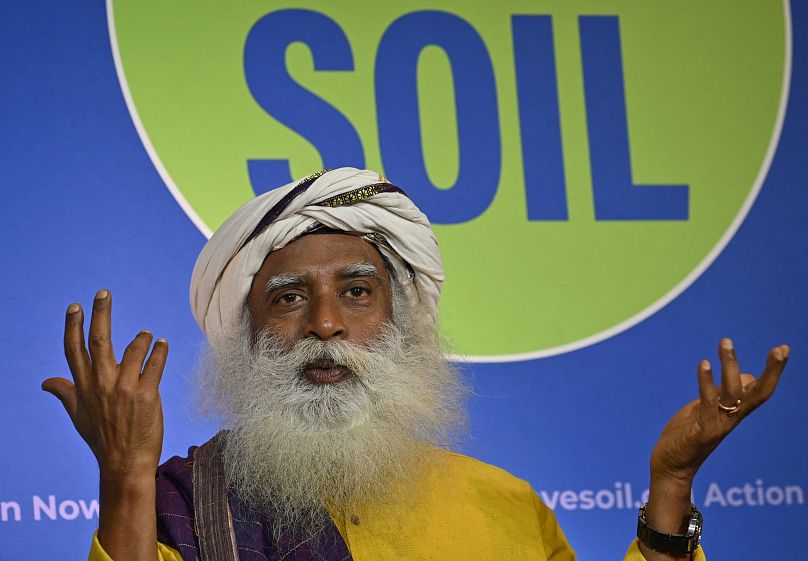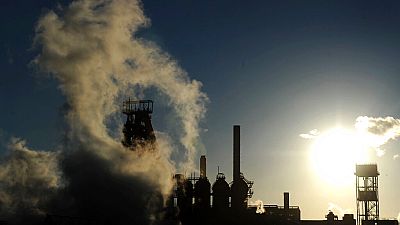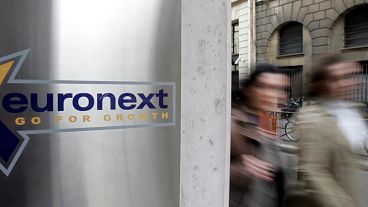Carbon markets could hold the key to sustainable farming and efforts to mitigate climate change, and many European farmers are exploring them further.
Firstly, carbon markets are financial platforms that allow investors to buy and sell carbon credits, which authorise buyers to produce certain amounts of greenhouse gases such as carbon dioxide.
Those who buy carbon credits are usually entities that don't have the capacity, investment or time to reduce their carbon footprint. This is often due to the nature of their business, such as steel, petrochemicals and cement, which are not so easy to decarbonise.
Some of the other biggest players in carbon markets are companies that want to stick to their corporate sustainability targets while also reducing their carbon footprints from other activities.
Yet others get involved in carbon markets simply to make a profit.
Sellers, on the other hand, are usually organisations that have successfully lowered their carbon usage and have excess carbon credits to sell. Private companies that create carbon projects and governments with emission reduction programmes are also some of the main suppliers.
The two types of carbon markets
There are two types of carbon markets, voluntary and compliance. Compliance markets are those which have been mandated by law or by a state, such as the European Union’s emissions trading systems, which have a “cap-and-trade” policy for businesses.
This generally means that businesses are allowed a certain number of emissions permits. If they go above their allocated amount, they need to purchase permits from other players, which can usually be bought on carbon markets.
Following the EU, China and India have also launched their own ETS, and are now two of the biggest suppliers of carbon credits globally.
The importance of carbon markets in farming
Euronews Business spoke to Save Soil, a global movement to look into the soil crisis, about the importance of carbon farming and the challenges European farmers are facing in accessing carbon markets. Save Soil was launched by Indian mystic, yogi and visionary Sadhguru.
Carbon farming, which involves practices designed to keep as much carbon as possible in soil and plant material, has seen a significant rise in popularity in the last few years. Its potential to slow down climate change is also becoming more recognised globally.
As more carbon is sequestered, farmers can also trade the excess on carbon markets. Carbon markets specifically directed towards farmers and agricultural companies have especially taken centre stage, allowing investors a much broader range of options today.
European farmers can naturally use a wide range of regenerative practices like no-till, mulching, crop rotation and more, to be able to sequester or gather more carbon, thus giving them more credits to trade. Europe has some of the better rates of credit available for farmers, which also provides more opportunities.
Farmers trying their hand at carbon farming can receive substantial support from the government and attract investments from private, socially and environmentally conscious companies.
Furthermore, trading carbon credits can act as a second source of income, for years when harvests are a little thin, or natural calamities occur. Several farms use their carbon farming subsidies to expand or branch out in different agricultural sections, thus also creating more local jobs.
As carbon farming grows and more carbon is preserved in the soil, less fertiliser is also required, allowing for longer for longer soil lifecycles. This means that farmers can also rotate crops more easily, and add another layer of security to their finances, in case one crop fails.
Challenges accessing the carbon markets
However, farmers still face considerable challenges in accessing carbon markets. The existing system means that projects need extremely skilled and knowledgeable people to develop, register, validate and audit them. Many farmers, especially in eastern European countries, may subsequently find it out of their budget to hire such people and could easily miss out on carbon markets.
Save Soil elaborates that other obstacles to increasing carbon credit financing access for farmers include establishing that the farmers’ activities directly lead to the sequestration of carbon. Complicated data maintenance processes at the farm level, as well as credit calculations, add to these woes. Soil organic carbon measurements can also be difficult to complete at the farm level.
Furthermore, carbon sequestration calculation documentation, models and evidence requirements are far from intuitive for farmers, being more suited for industries and their emissions.
Thus, when a one-size-fits-all framework is used for farmers, the process becomes even more complicated, yielding less relevant results. This is because the farmers’ carbon sequestration calculation is dependent on trees and plant species, soil type, irrigation, planting density, farm machinery and types of fertigation.
Therefore, a process which is more tailor-made for European farmers needs to be implemented, in order to attract more farmers to participate in carbon markets.
Coming to smaller farmers in parts of eastern Europe, as well as Asia and Africa, which hold smaller quantities of land, they would likely be sequestering less quantities of carbon than their larger peers. Hence, they may not be convinced of the benefits of carbon credits and may see the whole process of registering on carbon markets as more of a hassle.
Save Soil recommends that an intermediary be involved in these situations, who can possibly be a bridge between smaller farmers and national or international carbon trading agencies. This intermediary would ideally handle the complex aspects of registering and engaging with carbon markets, while also making the extra carbon income from these markets accessible for smaller farmers.
Moreover, measuring soil organic carbon at the farm level is vital to calculate the amount of credits generated. However, currently, these measurements are mostly lab-based, which are often not accurate enough. Thus, on-field measurements are still key, with Save Soil also recommending more innovation and research in measuring soil carbon through satellites and remote sensing.




